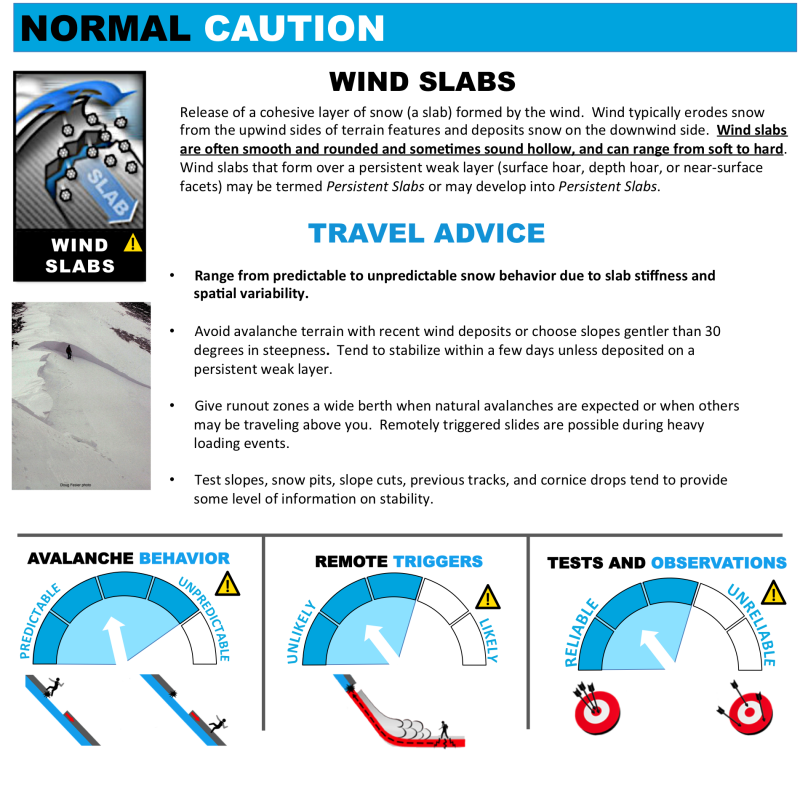The Avalanche Problem Toolbox

Two winters ago, a party of self-described expert skiers and snowboarders exited a ski area to center punch a very steep and committing untracked bowl of almost-thigh-deep powder. It was bluebird, and the stoke was high. Most of the party had been through a Level 1 avalanche class; they had checked the forecast—Moderate—dug a pit and made a plan to ski one at a time. Then, they watched with horror as the first skier threw in a ski cut that triggered an avalanche two- to four-feet deep and 600-feet wide.
At the end of the day, long after their friend had been pulled out of the snow, after rescuers had initiated CPR and after the victim had been pronounced dead and packaged for transport, the remaining members of the party sat together in disbelief. “We did all the right things,” they thought, “How could this have happened?”
Truth be told, they did most of the right things. And in this instance, most of the right things wasn’t enough. Just as importantly, it wasn’t the right day for some of the things they did.
So what are the things that the group did right?
- They took avalanche classes.
- They checked the day’s avalanche forecast.
- They carried and presumably knew how to use their rescue gear.
What are the things the group did that didn’t matter?
- They dug a snow pit.
- They dropped a cornice.
- The first skier threw in a ski cut.
The answer to “How could this have happened” lies somewhere between the misconception of the Avalanche Danger Scale and using the wrong tools for the wrong avalanche problem—it’s like taking a knife to a gunfight. It also can be attributed to the misperception of the safety margin provided by wearing an avalanche transceiver, airbag, avalanche cord, lucky rabbit’s foot—you name it. Sometimes, it’s like wearing your seatbelt during a head-on with a Mack truck.
A few years ago, in an effort to convey the devil in the details, the backcountry avalanche forecast centers began incorporating the Avalanche Problems into their daily advisories.
WHAT ARE THE AVALANCHE PROBLEMS?
The problems are based on Canadian ski guide Roger Atkins’s seminal paper at the 2004 International Snow Science Workshop and are fundamentally about character and personality. They include:
- Wind Slab
- Loose Dry Snow
- Loose Wet Snow
- Storm Snow
- Wet Slab
- Persistent Slab
- Deep Slab
- Cornice
- Glide Avalanche
Ten years after Atkins presented his paper, Wendy Wagner—of the Chugach National Forest Avalanche Center in Anchorage, Alaska—and I presented a follow-up paper, “The Avalanche Problem Toolbox,” in an effort to distinguish the Avalanche Problems and offer simple travel advice for each. We enlisted the ever-capable Jim Conway for help with the infographics as Jim had created the original graphics for the avalanche problems in 2005.
We wanted to communicate the idea that some avalanche conditions—even those with equal danger ratings—are more dangerous than others. The climbers in the crowd here will easily make the connection that some routes at the crag are rated 5.8 and some are rated 5.8X. A leader fall on a well-protected 5.8 may result in a couple scrapes or bruises. A leader fall on a 5.8X? Any climbing guidebook explains that “Death or Serious Injury May Occur.”
Different problems thus demand different tools. Some may be managed by experienced backcountry travelers doing all the right things whereas others may be safely managed only with terrain choices, like avoiding steep slopes. In other words, some (here’s the character/ personality part) are inherently less predictable and more consequential than others.
For example, the Avalanche Problem Toolbox will tell you that for shallow Loose Snow and Storm Snow avalanches, ski cuts and cornice drops can be effective mitigation tools. It will also tell you that snowpit tests are usually representative and that remotely triggered slides (avalanches triggered from a distance) are unlikely.
In contrast, the Avalanche Problem Toolbox will also tell you that for Deep Slab avalanches, ski cuts, cornice drops and snowpit tests can be notoriously unreliable; that other tracks on the slope mean nothing; that the best course of action would be to keep your slope angles down or avoid the terrain (a particular aspect and elevation) that harbors the Deep Slab beast altogether.

In the accident described at the start, the avalanche danger was Moderate, but it was a Persistent Slab problem. In conditions like these, ski cuts and cornice drops are notoriously unreliable and snowpit tests need to be taken with a grain of salt. The Avalanche Toolbox says to simply avoid steep terrain likely to harbor this problem.
Don’t settle for the Bottom Line avalanche danger. Next time the avalanche danger is rated as Moderate or Considerable, check to see what the primary avalanche problem or problems are. Consult the Avalanche Toolbox and use the proper tools for the problem at hand.
(originally published by Backcountry Magazine)
Concept Fall 2013 by Drew Hardesty, Utah Avalanche Center and Wendy Wagner, Chugach National Forest Avalanche Information Center. Presented at the International Snow Science Workshop 2014, Banff, Canada The full paper can be found here -
















